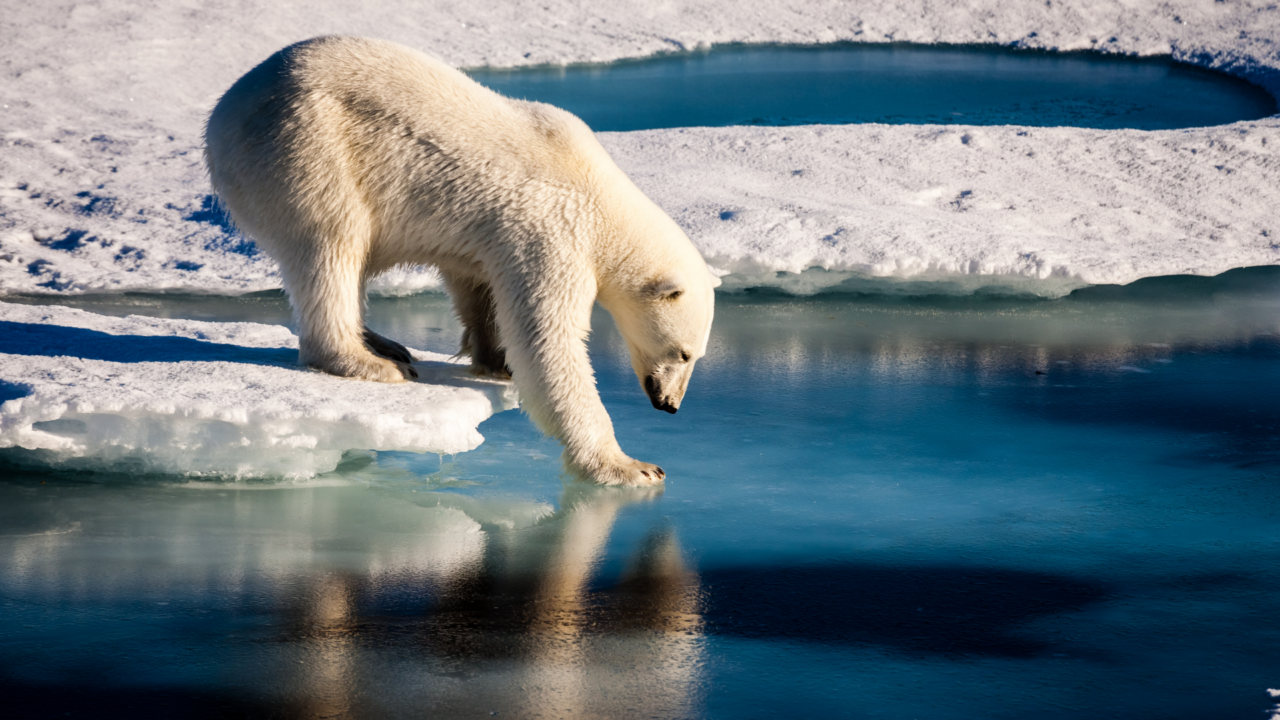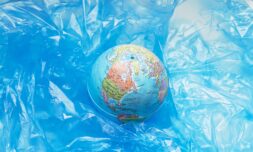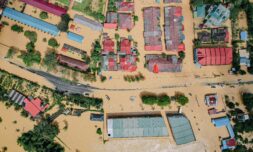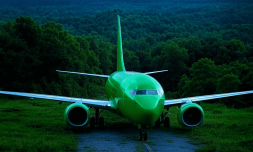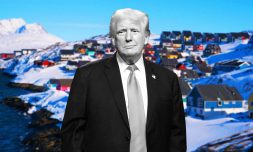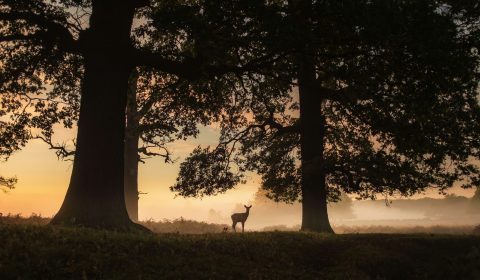Why is the polar bear a problematic symbol?
Of course, polar bears are apex predators – an important part of the Arctic ecosystem.
They exist in an already fragile part of the world that is at a greater risk of collapsing as the climate crisis worsens. Already, sea ice is disappearing at an alarming rate in the 19 regions where they live, including the Arctic regions of Canada, Greenland, Norway, Russia and the US.
As a result, scientists have estimated that there is a 70 percent chance the global population of polar bears will fall by more than a third within the next three generations. That said, many scientists firmly believe that it is unlikely that they will disappear altogether.
This argument has been bolstered by a discovery made last year by researchers at the University of Washington – a small but thriving population of polar bears found living in the ice-free sea off Southeast Greenland.
These bears are genetically distinct, rarely interacting with larger populations from the 19 species we discussed above. They have learned to survive without Arctic ice, instead relying on freshwater fjords formed by melting glacier water that empties into the sea.
This unique sub-population offers a glimmer of hope for the species, as well as a glimpse into what their future may look like as global temperatures continue to rise.
It should come as no surprise then, that the World Wide Fund for Nature (WWF) says the attention on polar bears may be a misguided distraction that removes attention from threats faced by other endangered species and ecosystems.
If we use the polar bear as a marker for how well – or badly – we are doing in our fight against climate change, it can lead us into reductive thinking. The polar bears are still alive, so everything is okay… right?
Well, not really.

The wider issues
It’s important to note that a deteriorating Arctic ecosystem will have global ramifications that extend well beyond the potential loss of polar bears.
Disappearing sea ice means less heat will be reflected back into space, warming the planet, and causing permafrost to melt. Stored inside this permafrost is carbon dioxide and methane which will be released during the process, resulting in more greenhouse gases in our atmosphere.
This will only further destabilise global weather patterns – a phenomenon we are already starting to witness today. Flash flooding is now causing trouble for agricultural industries and water supplies, while extreme wildfires stoked by drought and heatwaves have begun tearing through areas once teeming with wildlife and endangered species.
Most of all, these events have had dire consequences for people living in the Global South because climate adaptation doesn’t happen so naturally for humans. At present, estimates for the cost of global climate adaptation sit at around USD $140 billion minimum per year, with this figure estimated to increase to USD $500 billion by 2050.
Considering this, It’s quite ironic that the world has focused so intensely on the loss of polar bears rather than looking at their fellow humans who are most at risk.
A loss of the Arctic will create a ripple effect that eventually affects every living planet, animal, and human on Earth, which should be more of a reason to advocate for an end to environmentally destructive behaviours.
Because, in the end, we have more to lose than just polar bears.










